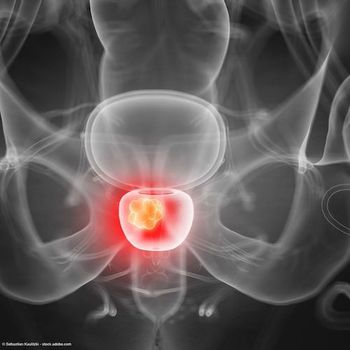
Tool helps improve accuracy of focal therapy for prostate cancer
"I'm very pleased that this is now in the armamentarium for us," says Wayne G. Brisbane, MD.
In this interview, Wayne G. Brisbane, MD, discusses the challenges of focal therapy for prostate cancer and how Unfold AI can help improve the accuracy of this treatment. Brisbane is an assistant professor of urology at the University of California, Los Angeles.
Please discuss how Unfold AI can improve the accuracy of focal therapy for prostate cancer.
I am a prostate cancer specialist; I basically see prostate cancer from diagnosis through treatment for localized disease. I do a very little bit of hormone therapy for castration-sensitive metastatic disease, but in general prostate cancer from diagnosis all the way through advanced treatments. That includes biopsies, talking about biomarkers with men, performing surgeries, and referring men to my colleagues in radiation oncology and medical oncology, for things more suited for radiation or castration resistance. I also do focal therapy as well for appropriately selected men. One of my frustrations with focal therapy has been that there are quite a few recurrences, and I don't think it's really going to be able to succeed as a therapy unless we do a little bit better at patient selection and figuring out where we are going to ablate tumors. We have a lot of energy sources: focused ultrasound from multiple different companies, cryotherapy, lasers, steam, NanoKnife, which is an electrical energy, and photodynamic therapy. There are a lot of ways to kill prostate tissue, but up to this point, we haven't had a way to figure out exactly where the tumor was inside the prostate. MRI has been revolutionary as far as changing the ability to see prostate cancer at all. Previous to this, it was only by saturation biopsies, which was basically like playing "Battleship;" you have a grid where you go every 5 mm and you space yourself through the prostate. But MRI has vastly improved our ability to visualize prostate cancer, and there are now other technologies like micro ultrasound and PSMA PET, but there are limitations to each of those. And so that has been a problem as far as focal therapy, both having patients be sure that we're doing a good job for them, and reducing recurrence rates. There is a new technology that's called Unfold AI. It uses multiple inputs, both patient clinical features, such as patient age and PSA level and then it also uses MRI inputs, so it will take the T2 weighted images, and then what the radiologist contours as the concerning lesion, which obviously takes in multiple different MRI inputs, like DWI and ADC, and then your contrast enhanced images. What's new about Unfold AI is it also takes the locations of tracked biopsy cores; these are biopsies that can be done with multiple different fusion platforms, and it takes to the geographic position of those cores in MRI space, and then it inputs those locations plus whatever the pathology shows. So this is both the Gleason score and the cancer core length. And then it runs that through a machine learning algorithm and generates a predicted tumor map. This is the location of the tumor, and then also, it gives you a margin where you can see what would need to be ablated in order to achieve some degree of certainty for killing the tumor. This is, I think, the first technology we've had in this area that both predicts tumor location better, and does it in a way that also has some some implications, obviously, for prostate cancer for decision-making. If you ask patients, would you like a treatment that treats your cancer and has fewer side effects, no one would say no. But the realistic assessment is that occasionally it works very well, and occasionally it doesn't. We didn't really have a way of being more sure that we were totally encapsulating the tumor, and so I think this technology will improve that considerably. It's been validated against a surgical cohort of men both here at UCLA and at Stanford, and appeared very accurate. If you give people just the standard things like MRI, pathology, patient features, when they're not being run through the AI, and then you allow for a washout period, and then you run it through the AI, both urologists and radiologists become considerably more accurate at contouring where the cancer is. And so I think that it's hopeful that it can be used by clinicians. I think this is quite a phase shift in how we will be doing focal therapy; I think it's very important. It's possible that other things like PSMA and micro ultrasound do a very good job of estimating the intra prostatic volume of tumor. But it's less robustly validated at this point, so we'll have to see. I think this might be something that's very useful, and it certainly has a graphical interface that is helpful for patients. As I mentioned, if you tell patients the benefits of focal therapy, without any of the drawbacks of tumor recurrence and things like that, everybody wants it. A lot of patients come in and have done their research, and regardless of what people think about focal therapy, "Dr. Google" paints it in a very favorable light. But I think it's important for people who are trying to counsel patients accurately on the risks and benefits of subtotal prostate ablation, that they have a way to counsel the patient in a form that makes sense to them, so that they don't feel like they missed out on something. And it can help them see why maybe they're not a good candidate. Unfold AI does that; it makes a heat map overlying the MRI, so you can say to patients, "This is where we think your heat map is. Your tumor is quite large, and it's close to the urethra. It's very close to the capsule; I'm concerned that maybe it's even going outside the capsule. It seems like focal therapy would be very overreaching in your case." That being said, there are other men who may be a good candidate, and we have to do more clinical trials to really see what the long-term outcomes of focal therapy are. But I do think that more accurate tumor predictions will be an important part of those clinical trials. And so I'm very pleased that this is now in the armamentarium for us. I think it will really improve the accuracy with which focal therapy can be done.
Newsletter
Stay current with the latest urology news and practice-changing insights — sign up now for the essential updates every urologist needs.




















